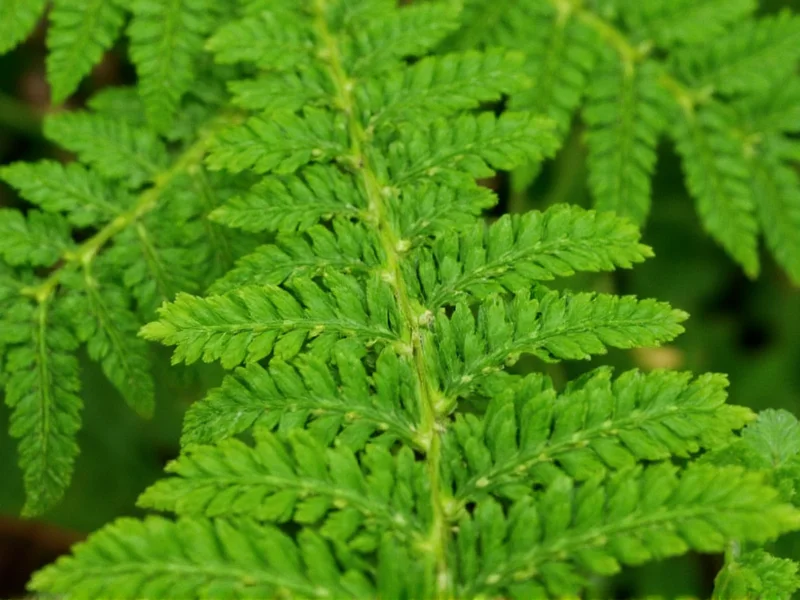When identifying plants in the wild, confusing ferns with culinary herbs can have serious consequences. While dill (Anethum graveolens) is a popular edible herb with hollow stems and a distinctive aroma, certain ferns that resemble it contain harmful compounds. The Northern Maidenhair Fern is the species most frequently mistaken for dill due to its similar feathery appearance, though several other fern varieties share comparable characteristics.
Visual Comparison: Maidenhair Fern vs. Dill
| Feature | Maidenhair Fern (Adiantum pedatum) | Dill (Anethum graveolens) |
|---|---|---|
| Stem Color | Shiny black or dark purple | Green, sometimes with purple tints |
| Stem Texture | Smooth, wiry, non-hollow | Hollow, slightly ridged |
| Foliage Pattern | Triangular with fan-shaped leaflets | Feathery, linear arrangement |
| Aroma | No distinctive scent | Strong, distinctive dill scent |
| Edibility | Not edible; contains toxic compounds | Fully edible herb |
Why Proper Identification Matters
Mistaking ferns for edible herbs represents a significant safety concern. While dill is completely safe for culinary use, many ferns contain thiaminase—an enzyme that breaks down vitamin B1 and can cause neurological issues with prolonged consumption. The Northern Maidenhair Fern isn't among the most toxic ferns, but it's still not recommended for consumption. Other ferns that might be confused with dill include the Lady Fern (Athyrium filix-femina) and Sensitive Fern (Onoclea sensibilis), both of which have similar feathery appearances but different growth patterns.
Field Identification Techniques
To accurately distinguish between dill and fern look-alikes, use these practical identification methods:
- Examine the stem structure: Dill has hollow, ridged stems that bruise easily, while Maidenhair Fern has solid, black, wiry stalks
- Check for aroma: Crush a small leaf between your fingers—dill emits a strong, distinctive scent while ferns have little to no aroma
- Observe growth pattern: Maidenhair Fern grows in distinctive triangular clusters with leaflets arranged along curved stalks, whereas dill grows in more linear, feathery sprays
- Look at the underside: Ferns typically have spore clusters (sori) on the underside of mature fronds, which dill lacks entirely
Habitat and Seasonal Considerations
The Northern Maidenhair Fern typically grows in moist, shaded woodland areas with rich, well-drained soil. It's commonly found in deciduous forests across North America, often near streams or in rocky areas with consistent moisture. Unlike dill, which is an annual herb typically cultivated in gardens, Maidenhair Fern is a perennial that returns each spring from underground rhizomes.
Seasonal differences provide additional identification clues. Maidenhair Fern emerges in spring with fiddleheads that unfurl into delicate fronds, while dill typically germinates in spring but reaches full maturity in summer. By late summer, Maidenhair Fern begins to yellow and die back, whereas dill continues producing seeds well into fall.
Safety First: When in Doubt, Leave it Out
For foragers interested in wild plants, proper identification is non-negotiable. If you're searching for 'fern that looks like dill' because you've encountered an unfamiliar plant, follow these safety protocols:
- Never consume any plant you cannot identify with 100% certainty
- Use multiple identification resources, not just visual comparison
- Consult with experienced foragers or botanists before consuming wild plants
- When photographing plants for identification, capture multiple angles including stems, leaves, and growth pattern
- Consider using plant identification apps as supplementary tools, not primary identification methods
Other Plants Confused with Dill
Beyond ferns, several other plants are commonly mistaken for dill, including:
- Fennel: Has a similar appearance but with a distinct licorice scent and yellow flowers
- Parsley: Features flatter leaves and a different growth pattern
- Hemlock: Extremely toxic with purple-spotted stems and must be distinguished carefully
- Anise: Similar scent profile but different leaf structure
Understanding these distinctions is crucial for anyone interested in foraging or gardening. The search for 'identify fern similar to dill' often stems from legitimate safety concerns, as proper plant identification prevents potentially dangerous mistakes.
Botanical Characteristics Explained
The visual similarity between Maidenhair Fern and dill results from convergent evolution—where unrelated plants develop similar appearances due to similar environmental pressures. Both have evolved finely divided leaves that maximize surface area for photosynthesis in their respective habitats.
However, their botanical classifications reveal fundamental differences. Dill belongs to the Apiaceae family (carrot family) with hollow stems and compound umbels of flowers, while Maidenhair Fern belongs to the Pteridaceae family with no flowers, reproducing via spores instead of seeds. These taxonomic differences explain why visual similarities can be deceiving when identifying plants in the wild.











 浙公网安备
33010002000092号
浙公网安备
33010002000092号 浙B2-20120091-4
浙B2-20120091-4